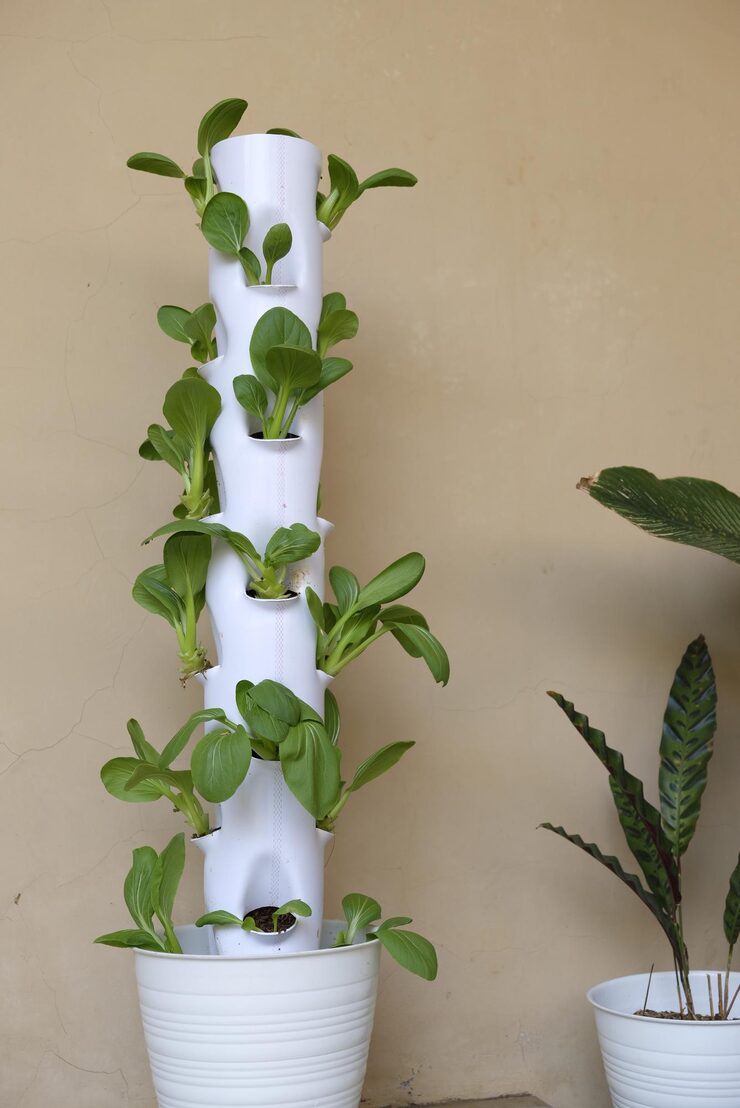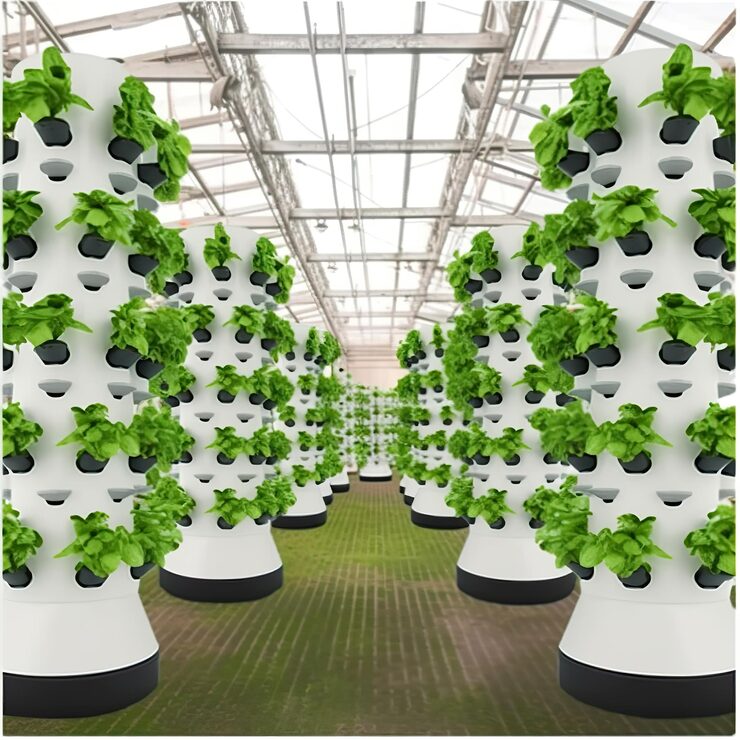The dream of cultivating fresh, organic produce right in your home is no longer a distant fantasy, thanks to the advent of the hydroponic tower garden. This innovative vertical farming solution offers a clean, efficient, and sustainable way to grow a bounty of lettuce, vegetables, herbs, and fruits without the need for soil. Imagine a continuous supply of nutrient-rich food, cultivated with minimal effort and occupying a mere three square feet of space. This article delves into the fascinating world of hydroponic garden systems, highlighting their mechanics, advantages, and the crucial role of hydroponic nutrients in achieving thriving yields.
What is a Hydroponic Tower Garden and How Does it Work?
At its core, a hydroponic tower garden utilizes hydroponics, a method of growing plants in water rather than soil. Unlike traditional gardening where seeds are sown in earth and watered to keep the soil moist for root absorption, hydroponic towers eliminate soil entirely. Instead, plant bases and roots are cradled within net pots, suspended in air inside the tower.
The design of a typical tower garden resembles a tall cylinder, housing a reservoir tank at its base. A water pump efficiently circulates water from this reservoir to the top of the tower. As water descends, it bathes the exposed roots of the plants before returning to the reservoir, creating a continuous, recirculating system. This closed-loop design is a testament to the remarkable water efficiency of a hydroponic garden.
A common question among new growers pertains to the watering schedule. While general guidelines exist, such as running the pump for 15 minutes every hour for plants germinated in rockwool, or more frequently for those in sponge cubes (e.g., 15 minutes on and 15 minutes off for 24 hours a day), these are adaptable. Factors like plant maturity and ambient temperature influence watering needs. Mature plants, with their more developed root systems, can tolerate longer periods between watering sessions compared to younger plants. The beauty of these systems lies in their compatibility with automated timers, allowing for precise and hands-free watering tailored to your plants’ specific growth stages. This automation significantly reduces the manual labor often associated with traditional gardening.
Hydroponics vs. Aeroponics: Understanding the Nuances
The interval-based watering method employed by hydroponic tower gardens introduces us to aeroponics, a specialized subset of hydroponics. While most traditional hydroponic systems keep plant roots constantly submerged in water, aeroponics exposes roots to more air than water. This distinction is vital because plant roots require oxygen for optimal growth. Although roots can absorb oxygen when submerged, absorption is far more efficient when they are directly exposed to air. This enhanced oxygen uptake is a key factor contributing to faster plant growth observed in aeroponic systems.
Technically, many modern “hydroponic towers” are, in fact, aeroponic towers, given their design that prioritizes air exposure for roots with intermittent nutrient-rich water delivery. While the distinction exists, for simplicity and broader understanding, the term “hydroponics” is often used to encompass these advanced water-based growing methods. Understanding this nuance enriches a grower’s knowledge, but for practical purposes, referring to these vertical systems as hydroponic tower gardens remains perfectly acceptable.
Vertical Growth and Space Efficiency: A Game Changer for Urban Dwellers
Traditional farming, with its expansive fields, demands vast tracts of land. A single head of lettuce, for instance, typically occupies a square foot. In stark contrast, a hydroponic tower garden dramatically optimizes space utilization. Within a mere three square feet, you can cultivate 24 or more heads of lettuce, achieving an impressive eight times greater yield per square foot. This significant reduction in land requirement, coupled with the unparalleled water efficiency, makes these systems incredibly appealing.
This concept of vertical gardening is particularly transformative for individuals residing in urban environments, where spacious yards are a luxury. Apartments, condos, and townhomes often come with limited outdoor space, such as a small balcony. A hydroponic tower can comfortably fit on a balcony, occupying no more space than a single chair, yet providing an abundant harvest. Furthermore, with the integration of grow lights, these towers can be brought indoors, allowing for year-round cultivation regardless of external conditions or available sunlight.
- Space Optimization: Grow significantly more produce in a compact footprint.
- Water Conservation: Utilize up to 95% less water compared to traditional farming.
- Automated Care: Enjoy hands-free watering and lighting schedules.
- Fresh, Local Produce: Access organic, pesticide-free food right at your fingertips.
The Role of Grow Lights and Hydroponic Nutrients
Sunlight is fundamental for plant photosynthesis, but for indoor hydroponic gardens, supplemental lighting is often essential. Modern LED grow lights have revolutionized indoor cultivation. Unlike the costly and energy-intensive high-pressure sodium bulbs of the past, LEDs are affordable, long-lasting (up to 100,000 hours), and remarkably energy-efficient.
Most hydroponic tower gardens offer the option of purchasing with or without integrated LED grow lights. If your outdoor space or indoor area receives ample natural sunlight (ideally a south-facing window in the northern hemisphere), grow lights may not be strictly necessary. However, for consistent indoor growing, lights are crucial to ensure your plants receive the necessary spectrum for optimal growth. Automating lighting with a timer, typically for 12-16 hours a day followed by 8-12 hours of darkness, mimics natural cycles and promotes healthy plant development. Remember that different plants have varying light requirements; fruiting plants like tomatoes and strawberries generally need more light than leafy greens.
Beyond light, hydroponic nutrients are the lifeblood of a thriving hydroponic garden. Since there is no soil to provide essential minerals, all the necessary elements for plant growth must be dissolved directly into the water reservoir. These nutrient solutions are meticulously formulated to provide a balanced diet of macronutrients (like nitrogen, phosphorus, and potassium) and micronutrients (such as iron, manganese, and zinc) that plants require at various stages of their development. Understanding and maintaining the correct concentration and pH of these nutrient solutions is paramount for successful hydroponic cultivation. Regular testing of the nutrient solution and timely replenishment ensure your plants receive a consistent supply of nourishment, leading to robust growth and abundant yields.

Understanding Tower Components and Food Safety
While a hydroponic tower garden may appear to be a simple plastic structure, the type of plastic used is critical for food safety. Reputable manufacturers ensure their towers are constructed from “food-safe” plastics, which are designated by specific recycling numbers: #1 (Polyethylene Terephthalate – PETE), #2 (High-Density Polyethylene – HDPE), #4 (Low-Density Polyethylene – LDPE), and #5 (Polypropylene – PP). These plastics are all BPA-free (Bisphenol A), a chemical linked to various health concerns, including effects on cell repair, growth, and fetal development. Always verify that your chosen hydroponic tower garden is made from one of these approved, BPA-free materials.
Conclusion
The hydroponic tower garden represents a significant leap forward in personal food cultivation. Its unparalleled efficiency in water and space utilization, coupled with automated systems for watering and lighting, makes it an ideal solution for urban dwellers and anyone seeking a sustainable source of fresh, organic produce. The precision offered by controlled environments and the tailored delivery of hydroponic nutrients ensure robust plant health and impressive yields. As the understanding and accessibility of these systems continue to grow, the hydroponic garden is poised to become an increasingly integral part of household food production. For those eager to embark on this journey of innovative gardening, ALTO Garden offers a range of high-quality hydroponic tower gardens designed to bring the future of farming directly to your home. Shop Now and experience the bounty of your own vertical garden.



